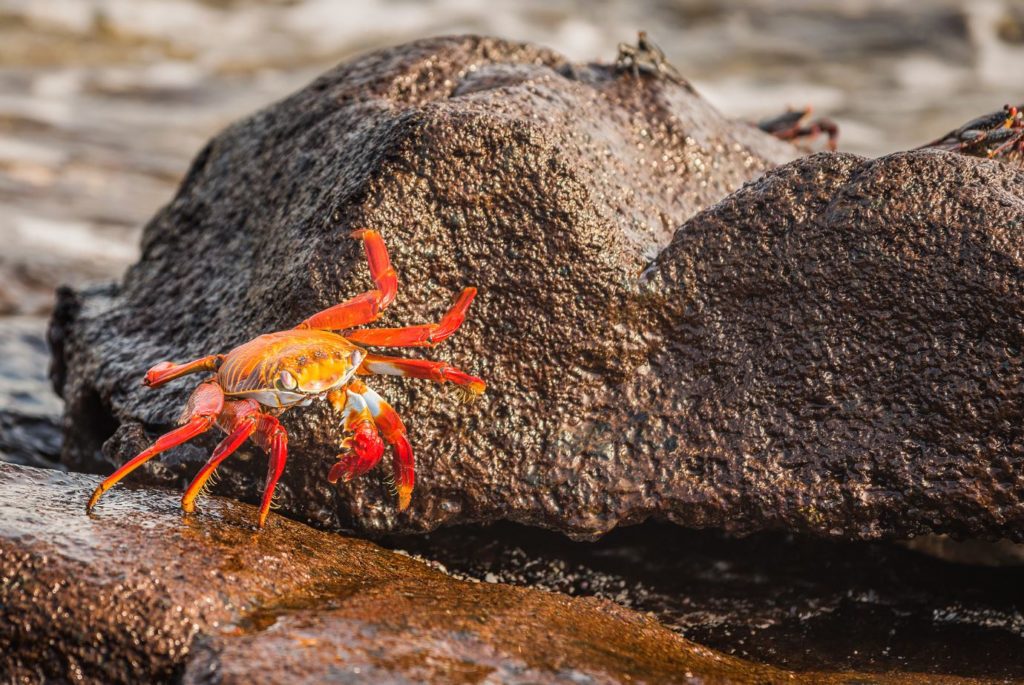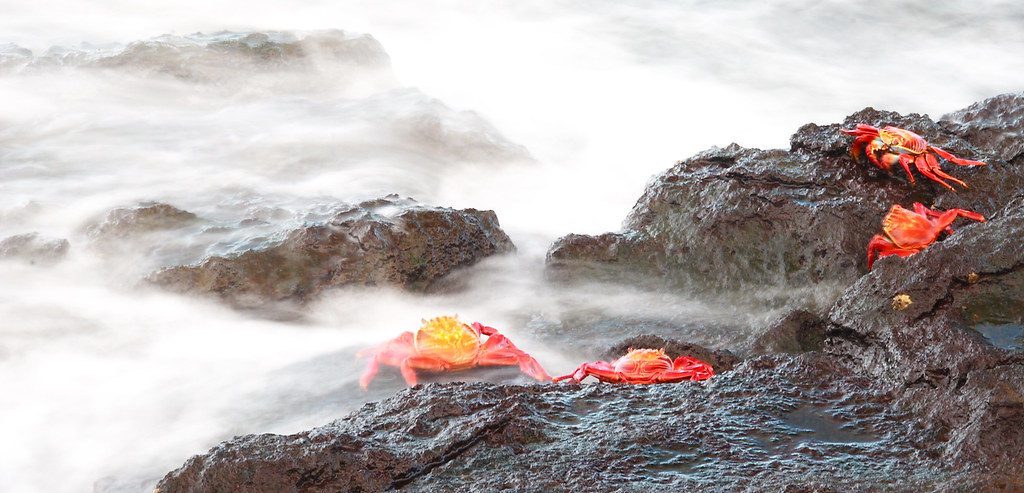There are saltwater crabs on practically every shore you visit. Still, in the Galapagos Islands, renowned for their distinct biota and unbalanced fauna, one species mainly sticks out: the Sally Lightfoot Crab. Visitors to the islands are drawn to the crab because of its vivid color and extraordinary agility, allowing it to dance among the deep black lava rocks and resist the Pacific’s smashing waves.

Javier Garcia

Eduardo Silva

Carolina Escobar
START PLANNING YOUR TRIP

Javier Garcia

Eduardo Silva

Carolina Escobar
Get in touch for more
CONTACT US
Because of its quickness and the dancer’s carefree style, the crab is said to have been named after her. With ten legs, the Sally Lightfoot crab may run in four different directions. They’re also nearly impossible to catch due to their incredible speed and quick responsiveness, which gives the impression that they can read the thoughts of their predators. When seeing the crab, “His (man’s) tendency eventually is to scream curses, to hurl himself at them, and to come up foaming with rage, bruises all over his chest,” as author John Steinbeck reportedly observed in “The Log of the Sea of Cortez.”
THEIR LEGS HOLD THE SECRET TO SURVIVAL

But their ability to move quickly is crucial to their existence. The Sally Lightfoot crab must be incredibly handy to survive. It faces many predators, including fish, octopuses, lava herons, moray eels, lava lizards, and even introduced rats, cats, and dogs. They hide in the crevices between the rocks for two-thirds of the day for the same reason. However, because of the strength of their legs, they can withstand the powerful waves that crash against them while they eat. Red and green algae that develop on coastal rocks are Sally Lightfoot crabs’ primary food source. When they notice a wave that could be dangerous coming, they flatten themselves against the rock and clutch fast.
These vibrant crabs are nevertheless opportunistic predators, meaning they will consume nearly anything they find, including dead fish, cracked eggs, bird droppings, sea lion placenta, newborn sea turtles, other crabs, and young birds. With this diversified diet, their claws come in quite handy. They use solid and pointed spoons to break up the food and scoop out the ingredients. They are essential to a healthy beach environment because of their roles as grazers, scavengers, and predators on the shore.
Specifically adjusted
These nimble crabs are fast, but they also know a few tactics to keep them out of the grasp of predators. First, the fleshy body of the Sally lightfoot crab, which gets stronger with age, is protected by a very durable shell. Their early shots are dark brown or black to blend in with the beaches and conceal from their prey. However, the body is much more delicate while they are young. However, as a protective measure to startle the predator, the crab can remove one of its legs—which it can grow back—or shoot water in response to severe threats. But allowing them to breathe on land is the main reason they store water in their shell. They can occasionally pour water over their gills to continue living because they spend much time on the ground.
Given the many predators for Sally lightfoot crabs, one would assume they would attempt to blend in slightly. Sally lightfoot crabs contrast sharply with the black rocks and white sands; their vivid red and blue colors and some pink or yellow markings are striking. However, because their shells are so robust, sexual selection precedes crabs. In reality, as they mature, their surface becomes brighter in addition to more brutal; young crabs have small red spots on their bodies, which get bigger with each molt until they reach an adult age and take on the characteristic adult hue. With certainty, we may state that when Sally Lightfoot.
Reproduction and breeding in the Sally Lightfoot Crab

The males breed more frequently than the females after the crabs reach adulthood, and the breeding season lasts all year. When the eggs are ready to hatch, the females release them into the ocean after carrying them on their tummies. They spend their first stage of existence in the sea, going through multiple molts that add new body segments and appendages. The young eventually transform into juveniles (the precise number of molts is uncertain). These crabs will molt throughout their lives as part of their overall health; when they do so, they shed their hard shell, which is only temporary, and transform into the highly sought-after soft-shell crabs, which live in rock crevices and cracks until their outer shell gradually hardens. They then repeat this process regularly. Since growth and molting frequency are correlated, a healthy Sally lightfoot crab will proliferate and undergo more moltings. Simply amazing!
Finding a newly abandoned shell can be lucky when exploring rough coasts. You’ll believe the ancient shot is still alive since these crabs will leave it pristine.
Please look at our list of iconic Galapagos species to help you decide which islands to visit while on vacation in the Enchanted Isles!

Javier Garcia

Eduardo Silva

Carolina Escobar
START PLANNING YOUR TRIP

Javier Garcia

Eduardo Silva

Carolina Escobar
Get in touch for more
CONTACT US
Where can I find Sally Lightfoot Crabs?
These stunning crabs are visible year-round and are typically found in shallow water and on most rocky shorelines in the Galapagos Archipelago. The islands Española, Santiago, Fernandina, Floreana, and San Cristobal are the best places to watch them. They are found in the Galapagos Islands and on the coasts of Mexico, Central America, and neighboring islands. During your Galapagos tour, will these incredible crabs be visible to you?
Blog Reviewed & Edited by: Francisco Dousdebés
All Images: Francisco Dousdebés


